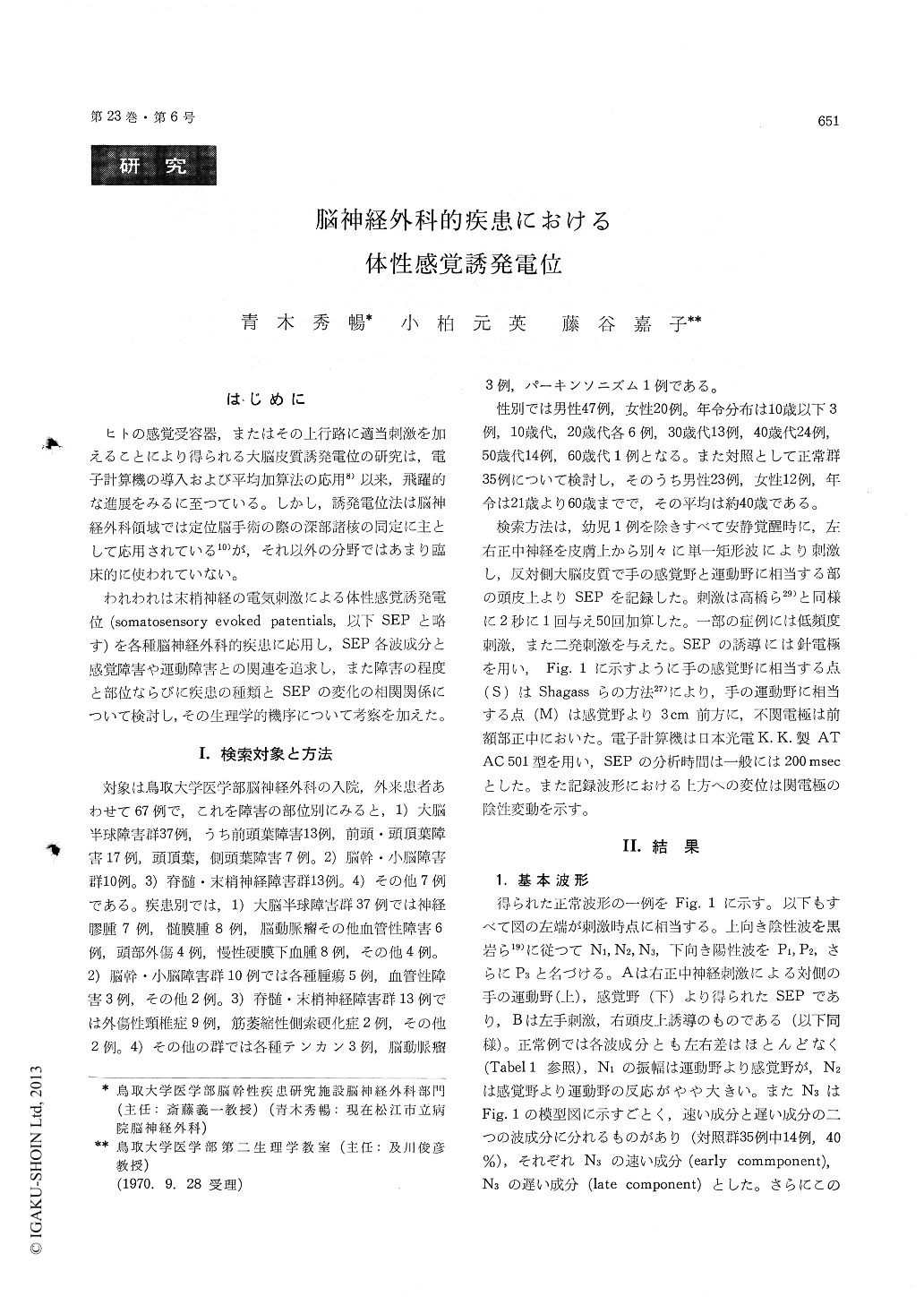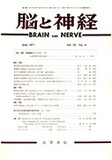Japanese
English
- 有料閲覧
- Abstract 文献概要
- 1ページ目 Look Inside
はじめに
ヒトの感覚受容器,またはその上行路に適当刺激を加えることにより得られる大脳皮質誘発電位の研究は,電子計算機の導入および平均加算法の応用8)以来,飛躍的な進展をみるに至っている。しかし,誘発電位法は脳神経外科領域では定位脳手術の際の深部諸核の同定に主として応用されている10)が,それ以外の分野ではあまり臨床的に使われていない。
われわれは末梢神経の電気刺激による体性感覚誘発電位(somatosensory evoked patentials,以下SEPと略す)を各種脳神経外科的疾患に応用し,SEP各波成分と感覚障害や運動障害との関連を追求し,また障害の程度と部位ならびに疾患の種類とSEPの変化の相関関係について検討し,その生理学的機序について考察を加えた。
The somatosensory evoked potentials in response to electrical stimulation of the contralateral median nerve were examined in 67 patients with various lesions of the central and peripheral nervous systems and in 35 healthy subjects. The correlation bet-ween clinical observations and alterations in each component of the evoked potentials were specifically investigated. The results obtained were as follows.
1) The changes of the potentials were well cor-related more with clinical symptoms than with the classfications of neurological lesions. Patients with moderate to severe impairments exhibited attenua-tion in ampulitude of the primary first negative were component (N1) of the potentials elicited from the affected side. The amplitude reduction of the second negative and positive waves (N2 and P2, respectively) reflected clinical motor disturbances due to the lesions of the cerebral hemisphere. It was suggested that the third negative wave com-ponent (N3) is composed of two sub-elements.
2) Responses to repetitive stimulation were in-vestigated on each negative wave component at a rate of 2-20/sec. In the control group, neither facilitation nor depression of the amplitude was observed in the N1 wave, while the N2 wave faci-litated by stimulation of 2-20/sec and of 10-20/sec. Facilitation was observed in the early component of the N3 wave and the late one was depressed with repetition of 2-10/sec. In 6 patients, all components of the evoked potentials were depressed with increasing stimulus frequency.
3) Recovery curves of the N1 and N2 waves were obtained by double shock method. In 6 healthy subjects, relative refractoriness of the N1 wave was at 15-40 msec and that of the N2 wave at 20-40 msec. Early facilitation was seen at 40-60 msec or 40-80 msec in these respective waves. In both wave components of 6 cases with sensory and/or motor impairments, relative refractoriness was de-layed, the amount of early facilitation increased and late facilitation took place.
The above-mentioned results are in line with previous investigator's conclusion that abolition or marked reduction of all wave components of the somatosensory evoked potentials results from abo-lition or reduction of impulse activities in the pos-terior column, the medial lemniscal system and the specific thalamo-cortical projection system. Disap-pearance or attenuation of some wave components may be due to partial impairments of the specific thalamo-cortical projection system or the primary or association cortex.

Copyright © 1971, Igaku-Shoin Ltd. All rights reserved.


